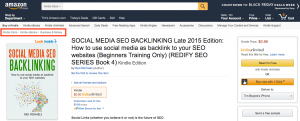With the huge increase of mobile searches over the last few years, marketers are finding a number of new ways to drive offline conversions through online advertising. Advertisers can now switch tactics from online acquisition to driving consumers to physical stores depending on their location. In this post I’ll outline how advertisers can drive offline retail conversions by targeting searchers on the go.
Use location extensions.
Using location extensions advertisers can dynamically attach their business address to their ads. This will allow users on the go to know how far away they are from one of your stores and provide information on how to get there. This can lead to a significant increase in store visits from searchers who are close by. By using location extensions in conjunction with location bid modifiers advertisers can make sure they are appearing in top positions and displaying information on how searchers can easily find their nearest store.
Location bid modifiers.
By using location bid modifiers retail advertisers can appear in the top search positions when searches are close by to one of their stores. Positive bid modifiers can be setup to target a radius around their stores using location extension addresses. These bid modifiers can be staggered so the closer a searcher is to one of your stores, the higher the bid modifier will be. Advertisers will gain greater exposure and location extensions will be more likely to be shown when an ad is in a higher position.
Local inventory ads.
Local inventory ads have a similar format to product listing ads (PLAs) but show users which products are available at a nearby physical location.
Mobile devices are limited to show either online PLAs or local inventory ads. If an advertiser wants to drive offline retail conversions through online advertising they can show searchers local inventory ads anytime they perform a relevant search near one of their stores.
If advertisers are worried how this will effect online conversions, another option is to use Multichannel Product Listing Ads. These ads give users the option to buy online or view product availability at a nearby location. Advertisers can also include a “Buy Online” link at their local storefront, giving shoppers the option to purchase a product from their website if it’s also available on their site.
Measurement
The Store Visits metric in AdWords estimates the uplift paid search has on visits to a retailer’s store. This metric is calculated based on aggregated, anonymised data from a sample set of users that have turned on Location History. The store visits metric allows you to estimate the in-store revenue that paid search drives. This can be done with a simple calculation.
Paid Search Store Revenue = Paid Search Clicks X Shop Visit Rate X Shop Conv. Rate X Shop Average Conv. Value
If you want a more complete end-to-end revenue tracking system you can use the ability to track unique IDs from online to offline. One way this tracking is currently being implemented for retail is by connecting the online and offline worlds to Unique IDs. This can be done through a website customer login (online) and a customer loyalty card (offline). If advertisers use a platform that allows revenue integrations, offline transactions can be mapped against their keywords.
Digital advertising can have a significant impact on offline retail conversions. Using the aforementioned tactics, digital advertisers can switch from driving online transactions to driving footfall to their physical stores depending on a searchers location. Advertisers can also implement measurement solutions to quantify and optimise offline performance from their online advertising.
(219)





